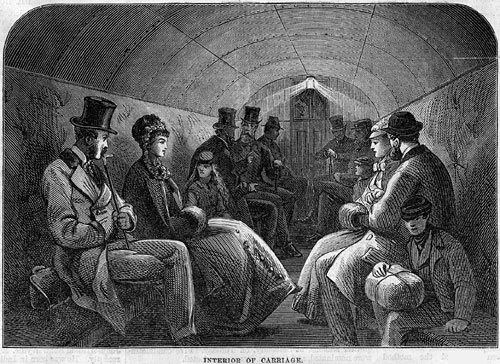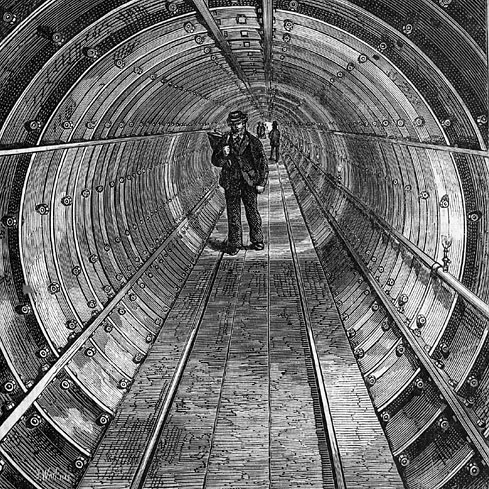Occasionally, digging back through The Engineer archives, we come across glimpses of forgotten infrastructures and technologies — brief flashes of things that have been superceded, which make landscapes and activities now familiar to us seem strange and alien.
Consider, for example, London’s iconic Tower Bridge. It’s such an instantly recognisable landmark that it seems to us that it’s always been there: that as long as the Tower itself — a medieval castle, don’t forget — has been there, people have crossed the river between its two square pinnacles.
That’s not the case, of course; the bridge is relatively recent, finished in 1894. Before that, the question of how people should cross the river was tackled differently, as described in a particularly crumbly and fragile bound volume of The Engineer.
An engineer named Peter Barlow proposed that a subway should be built under the river bed, as it was the only way that a river crossing could be achieved: an attempt to bridge the river had failed in 1863, because of ‘the great height required for the passage of ships’ (a problem solved by Tower Bridge, of course, by allowing the roadway to rise). Steam-ferries across the river wouldn’t work either, because they would disrupt shipping too much.

Barlow’s son, also called Peter, oversaw the work, which began with the sinking of a shaft at Tower Hill. 10ft wide and 48ft deep and lined with brickwork and cast-iron cylinders. The subway itself was dug using a wrough-iron tunnel-boring shield, presumably similar to the one developed by Marc Brunel to dig the first Thames tunnel at Rotherhithe in 1825. ‘This shield, which has an outer plate, will overlap the completed work, and a smaller heading will be carried forward in front of the work, and the shield propelled by screws, and as it progresses the tunnel segments will be bolted on behind,’ the article says. Beneath our feet at this very moment, Crossrail’s engineers are doing something very similar, albeit with much larger equipment.
The subway itself was 100ft long and 7ft in diameter, lined with cast-iron segments. Running 22ft below the river bed through stiff London clay — much easier to tunnel than the soft river mud that Brunel had dug through — it was fitted with steel rails on a 2ft 6in gauge, and stationary steam engines were installed at either end, which pulled a wrought-iron carriage along from North to South. Another shaft was dug at the southern end, just off Tooley Street, and lifts installed to take passengers up and down to the subway. ‘The stations at the tops of the shaft wil be only sufficiently large to admit the lifts, and hence will not occupty more street space than the stand of an omnibus,’ says the article.

The tunnel was completed in 14 weeks, and opened in August 1870. Unfortunately, Barlow’s system of steam engines and carriage proved unreliable, and the company running it went bust within a year. The lifts and rails were removed and spiral stairways and gas lighting installed, and the subway reopened as a foot-tunnel, and 20,000 people a week used it, paying a ha’penny toll. It was very popular with working people, although contemporary accounts make it sound like a rather unpleasant experience: Charles Dickens Jr, the novellist’s son, said in a London guide that the headroom was so low that you shouldn’t walk it wearing a hat ‘to which you attached any particular value’, and an Italian writer, Edmondo de Amicis, said that the walls sweated, the floor heaved like the deck of a ship, and the whole thing was like descending into the underworld. ‘If a crack should open in the wall you would not even have the time to recommend your soul to God,’ de Amici said, ‘in that moment how lovely seems the sun!
The tunnel remained popular until Tower Bridge was completed; being free to cross, it caused the subway revenues to collapse. The subway closed to the public in 1898, and was sold to the London Hydraulic Power Company. It’s still there today, despite bomb damage during World War Two, and is now used to carry water mains. The tunnelling technique Barlow’s team had employed also found more use: it was used to construct the first deep tunnels for the London Underground, forming the beginning of the true ‘Tube’.










Radio wave weapon knocks out drone swarms
Probably. A radio-controlled drone cannot be completely shielded to RF, else you´d lose the ability to control it. The fibre optical cable removes...